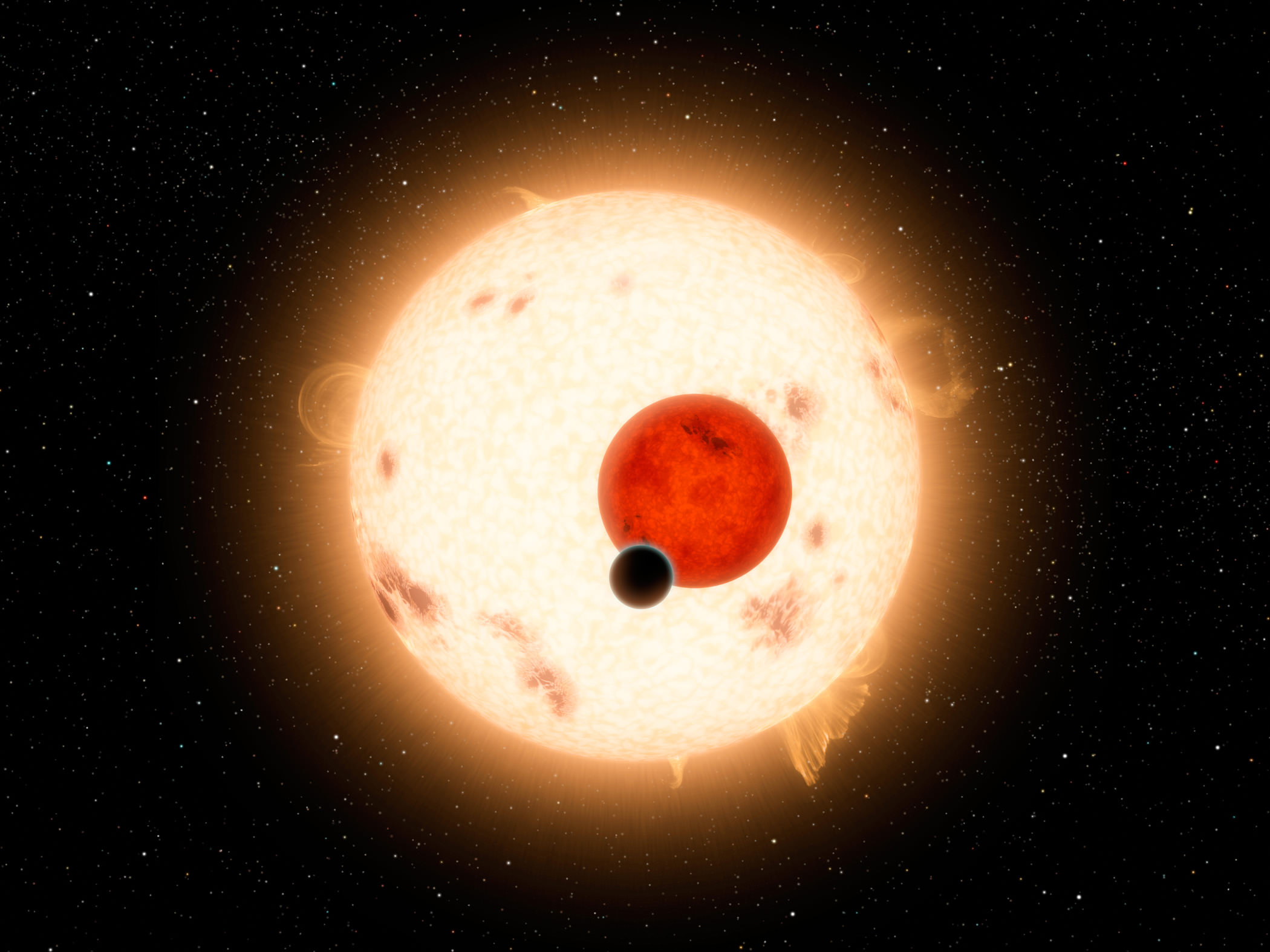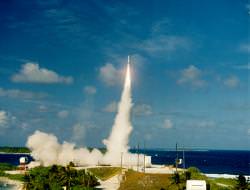[/caption]
In a news conference today, Kepler mission scientists announced the first confirmed circumbinary planet ( a planet that orbits a binary star system). The planet in question, designated Kepler-16b has been compared to the planet Tatooine from the Star Wars saga.
Would it be possible for someone like Luke Skywalker to stand on the surface of Kepler-16b and see the famous “binary sunset” as depicted in Star Wars?
Despite the initial comparison between Kepler-16b and Tatooine, the planets really only have their orbit around a binary star system in common. Kepler-16b is estimated to weigh about a third the mass of Jupiter, with a radius of around three-quarters that of Jupiter.
Given the mass and radius estimates, this makes Kepler-16b closer to Saturn than the rocky, desert-like world of Tatooine. Kepler-16b’s orbit around its two parent stars takes about 229 days, which is similar to Venus’ 225-day orbit. At a distance of about 65 million miles from its parent stars, which are both cooler than our sun, temperatures on Kepler-16b are estimated in the range of around -100 C.
The team did mention that Kepler-16b is just outside of the habitable zone of the Kepler-16 system. Despite being just outside the habitable zone, the team did mention that it could be possible for Kepler-16b to have a habitable moon, if said moon had a thick, greenhouse gas atmosphere.

The Kepler mission detects exoplanet candidates by using the transit method which detects the dimming of the light emitted from a star as a planet crosses in front of it. In the case of Kepler-16b, the detection was complicated by the two stars in the system eclipsing each other.
The system’s brightness showed variations even when the stars were not eclipsing each other, which hinted at a third body. What further complicated matters was that the variations in brightness appeared at irregular time intervals. The irregular time intervals hinted that the stars were in different positions in their orbit each time the third body passed. After studying the data, the team came to the conclusion that the third body was orbiting, not just one, but both stars.
“Much of what we know about the sizes of stars comes from such eclipsing binary systems, and most of what we know about the size of planets comes from transits,” added Kepler scientist Laurance Doyle of the SETI Institute. “Kepler-16 combines the best of both worlds, with stellar eclipses and planetary transits in one system.” Doyle’s findings will be published in the Sept. 15th issue of the journal Science.
The Kepler mission is NASA’s first mission capable of finding Earth-size planets in or near the habitable zone – the region around a star where liquid water can exist on the surface of an orbiting planet. A considerable number of planets and planet candidates have been detected by the mission so far. If you’d like to learn more about the Kepler mission, visit: http://kepler.nasa.gov/
You can also read more about the Kepler-16b discovery at: http://kepler.nasa.gov/Mission/discoveries/kepler16b/
Source: NASA news conference / NASA TV
Ray Sanders is a Sci-Fi geek, astronomer and space/science blogger. Visit his website Dear Astronomer and follow on Twitter (@DearAstronomer) or Google+ for more space musings.


